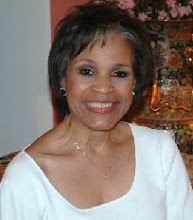
Sometimes we pay attention; sometimes we don't. Apparently, even the most attentive parents are oblivious to what their kids are ingesting. According to a study released this week, we're feeding our kids some pretty deadly stuff. Who knew?
Imagine being a kid, chillin’ in your bedroom, snacking on high sodium chips and a beverage laced with high fructose corn syrup, totally engrossed in your favorite cartoon show, Shaman King, when “Wham!” One of the characters stabs the other with a sword; then he reaches into his mortally wounded victim’s chest and scoops out his soul.
Would you flinch? Would you cover your eyes? Would you run screaming, “Mom, this is gross!” Probably not.
Why? Because you’ve seen thousands of folks beheaded, gutted, stomped, shot or stabbed during your young lifetime. This is normal.
According to the Parents Television Council, our kids are devouring a steady diet of violence on a daily basis. Last summer, the council analyzed 444 hours of children’s television. I’m sure it felt more like 666 because when they turned off the set, they’d seen nearly 2,800 acts of violence. That’s an average of more than six violent acts per hour.
Think about it: If throughout your childhood, you saw your heroes solving their problems by whacking people, what’s going to be your knee-jerk reaction when someone gets on your nerves or is wearing a jacket or gym shoes that you'd like to have? What's the "normal" response for any kid who witnesses gratuituous and inhumane violence six times an hour?
A former colleague’s son answered that question for me, not too long ago. I met this kid when he was about five years old. His father occasionally brought him to the newsroom. He was an absolutely adorable kid; and my colleague's world revolved around this child, who matured into a bright, charming young man.
During his first year in college, my colleague's son had an altercation with a classmate that turned into a long-running feud. One day, the young man had had enough. When he spotted his enemy walking down the street, he used his car as a battering ram and plowed the other boy into a tree.
In an instant, two promising young men were lost. Two families were devastated. Neither will be able to hold their son in their arms again. One is buried. The other is incarcerated for life. Both are from a generation of kids who repeatedly saw violent problem solving on television, where the line blurs between reality and fantasy.
My daughter was a toddler the first time she saw me on TV. She went running to the set, squealing, “Mommy!” She couldn’t yet distinguish the Mom reporting the news from the one who made her breakfast. All she knew was that this one wasn’t acknowledging her. And she didn’t like that one bit.
One evening, I was home by the time my story hit the air, so you can imagine her confusion when suddenly there were two of us in the room wearing the same clothes. Her reaction was not surprising.
According to Dr. Michael Rich, director of the Center of Media and Children's Health at Harvard University's medical school, children under age eight are cognitively unable to distinguish between what’s real and what’s not; and that includes TV violence. In fact, after studying reactions to the Sept. 11 terrorist attacks, Dr. Rich discovered that kids were much less upset than their parents. One conclusion: the children couldn't distinguish it from what they regularly see on TV.
Fascinating, isn't it: We were traumatized, but our kids were desensitized. If that doesn't remind us, I don't know what will: we are what we eat.

1 comment:
Pat, thanks for writing about this.
Your essay is very affecting and disturbing. I believe what you're suggesting is true, and it concerns me both for children and adults -- that what we see shapes our realities. I've been wishing all the dreadful focus on murders,
senstational acts and incidences of the worst of human behavior that we see in our newspapers and on TV would be replaced with positive, inspiring examples of the good and the generous ways people share with and help each other. I believe our being exposed to this, day after day, would change our collective behavior and mindsets such that we would be more loving and positive towards each other, and it would shift our culture.
Post a Comment